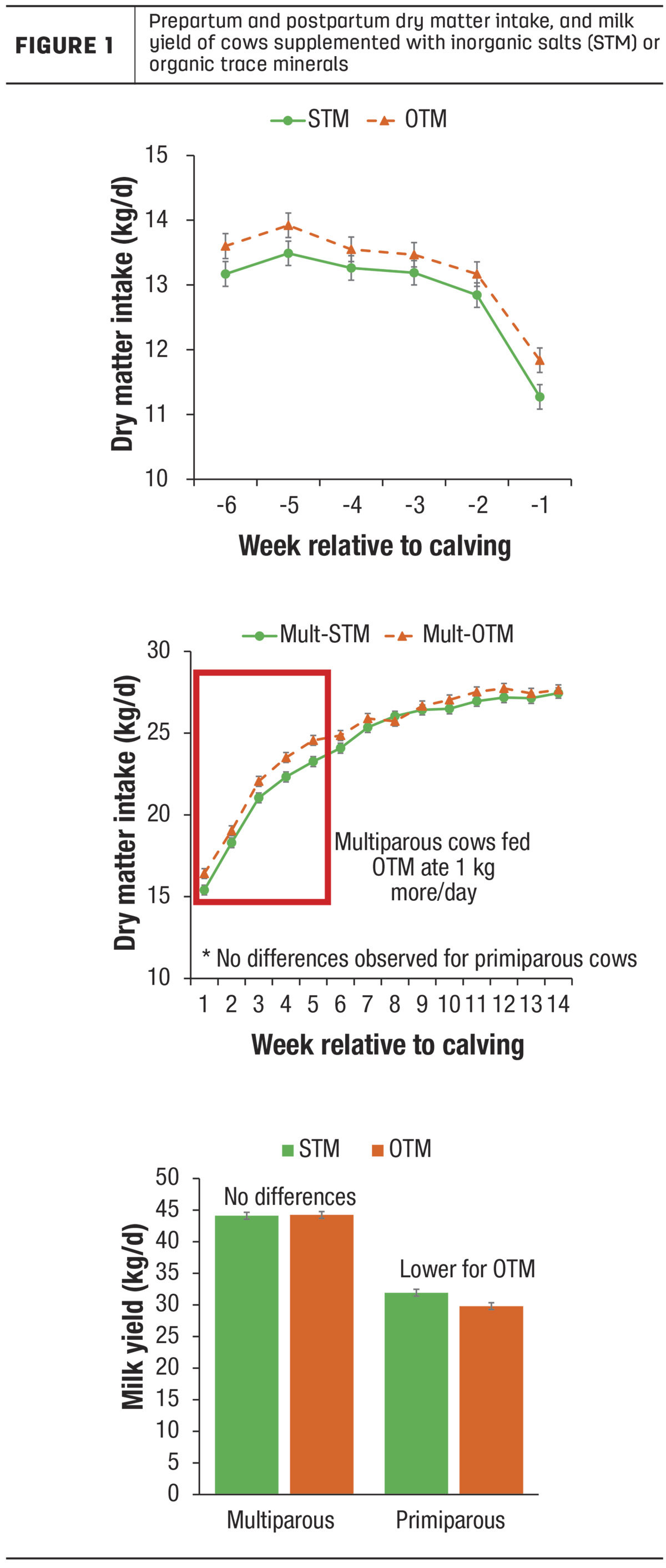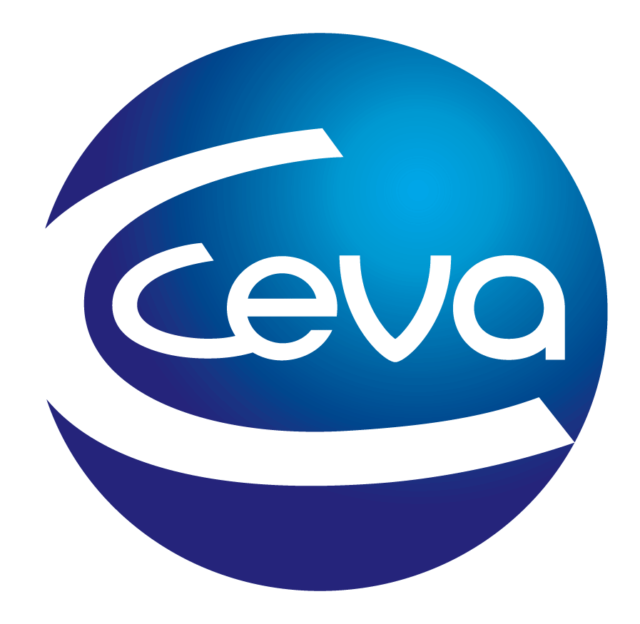Trace minerals are the minerals required in small quantities, normally added in milligrams or micrograms to dairy cow diets. Required trace minerals include cobalt, copper, iodine, manganese, selenium and zinc. The amounts available in forages, hay, silage, haylage and grains are often insufficient to fulfill the needs of dairy cows. For this reason, most nutritionists recommend dietary supplementation with trace mineral mixtures. Although required in very small amounts, these minerals are essential for many biological processes, including the antioxidant response, synthesis of vitamins, immune function, and proper reproduction and performance.
It is possible to supplement using different sources, such as inorganic, hydroxy or organic trace minerals. Although supplements may provide the same amounts of trace minerals, there are differences in the biochemistry of the molecules and in the manufacturing process of each one.
An inorganic trace mineral is made of the mineral bound to an inorganic salt, such as a sulphate, carbonate or oxide. They are the least-expensive choice for trace mineral supplementation. However, the bond between the mineral and the salt is weak. The consequence of this weak bond is that when an inorganic trace mineral passes through a cow’s digestive process, the salt and the mineral often dissociate, releasing a free, unbound mineral ion into the gut. As a result, the mineral molecule may bind to other molecules and become unavailable, potentially affecting the activity of microorganisms in the rumen. A hydroxy trace mineral is also considered an inorganic source; however, the bond between the mineral and the hydroxy molecule is different and is relatively stronger.
Organic trace minerals also have a stronger bond. In this case, the mineral is bound to an organic molecule, such as a peptide, amino acid, polysaccharide or picolinate. The structure of organic trace minerals is believed to protect the mineral from dissociation while in the gut, which could improve its bioavailability for absorption.
The sources of supplementary trace minerals have different stability, solubility and chemical properties. Therefore, different sources of trace minerals may behave differently in the digestive tract of ruminants and have different effects on animal performance. Although there are several scientific studies evaluating the effect of using different sources of trace minerals in the diet of dairy cows, they are difficult to understand and have some confounding factors, such as mixing different sources of minerals in the same diet, which makes the interpretation more complex.
With that in mind, our research group at the University of Guelph conducted an experiment evaluating the effect of complete replacement of inorganic trace minerals with organic trace minerals in pre- and postpartum diets using an approach that is easy to interpret and avoids confounding factors. We enrolled 273 pregnant cows and heifers 45 days before their expected calving date, housed in a freestall barn. The females were randomly assigned to receive one of two treatments. One group was fed inorganic salts of trace minerals (STM), so the cows received cobalt, copper, manganese and zinc sulphates and sodium selenite. The other group was fed organic trace minerals (OTM), including cobalt, copper, manganese and zinc proteinates (Bioplex, Alltech) and selenized yeast (Sel-Plex, Alltech).
The inclusion level of each trace mineral was the same for both groups (see Table 1). The supplementation of trace minerals considered the amounts supplied by the ingredients used in the total mixed ration (TMR). The cows received the diet until 150 days in milk (DIM), and data of feed intake, milk yield and bodyweight were recorded. Samples of blood, ruminal fluid, urine, feces, milk, colostrum and liver were collected throughout the experiment to evaluate the concentration of trace minerals and other metabolites.

The effect of the supplementation source on mineral status is described in Table 2. In general, cows fed OTM had a better selenium status, with great selenium concentration in blood, colostrum and milk, and a lower selenium concentration in urine. In addition, OTM-fed cows had greater cobalt in their blood before calving, and lower cobalt concentration in their blood after calving, as well as lower cobalt concentrations in feces and urine.

Before calving, the OTM group had greater feed intake, especially in the last week before parturition (Figure 1) and had a more positive energy balance. After calving, responses were dependent on parity. Multiparous cows fed OTM had a feed intake 5.2% greater in the first five weeks after calving (Figure 1). However, the feed intake did not differ between groups of primiparous cows. For milk yield, although it did not differ between groups of multiparous cows, primiparous cows fed STM had greater milk yield than primiparous cows fed OTM (Figure 1). In addition, primiparous cows supplemented with OTM had greater postpartum body condition scores than primiparous cows supplemented with STM. Regardless of parity, supplementation with OTM also resulted in a greater percentage of protein in milk in comparison to supplementation with STM (STM = 3.11% versus OTM = 3.17%), although fat was not different.

We also evaluated some blood biomarkers linked to antioxidant response and metabolism. We did not detect differences between treatments in the activity of antioxidants. However, we detected differences in the concentration of some metabolites. The cows supplemented with OTM had lower non-esterified fatty acids (NEFA) concentrations in their blood, which is a marker of adipose tissue mobilization. In addition, albumin concentration was greater for OTM-supplemented cows, and ceruloplasmin concentrations were lower in OTM-supplemented primiparous cows, which indicates a lower degree of inflammation. Supplementation of OTM improved hoof health, reducing by half the incidence of lameness and improving locomotion scores of the animals. Moreover, OTM-supplemented cows had 57% lower incidence of several metabolic problems.
Supplementary trace mineral sources may affect animals differently. In our study, cows fed OTM had greater feed intake, higher statuses of some minerals, as well as lower incidence of lameness and metabolic problems. Adequate supplementation of trace minerals can have a positive impact on the health and performance of your herd, even though they represent a small part of the diet.
Each farm has its own needs and challenges, but it is important to pay attention to the details when formulating rations that allow cows to perform at their best. Discuss with your nutritionist the best approach for trace mineral supplementation by checking to see if the levels of minerals in the diet are adequate and looking into the sources available.
This research was funded by the Natural Sciences and Engineering Research Council of Canada (NSERC Collaborative Research and Development Grant #503732), the Ontario Centre of Excellence (Alberta-Ontario Innovation Program Grant #26426) and Alltech Animal Nutrition (Lexington, Kentucky).









